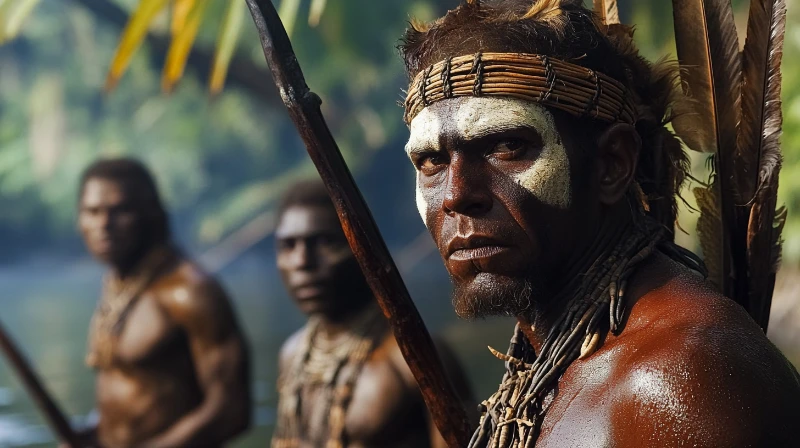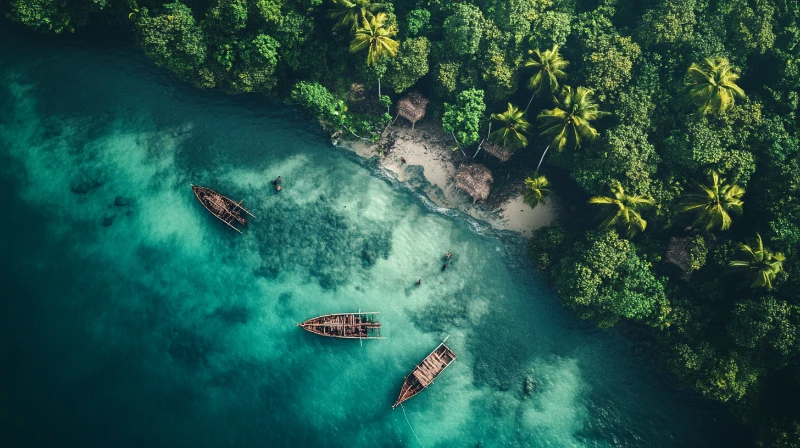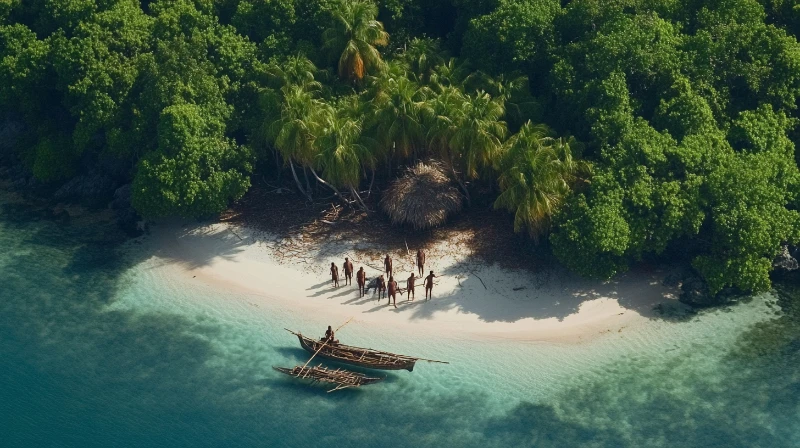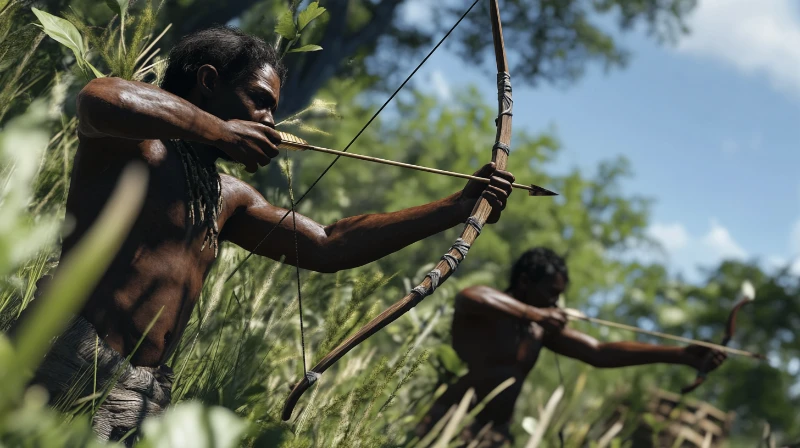Nestled in the heart of the Bay of Bengal, shrouded in the deepest shades of green, and surrounded by crystal-clear waters, North Sentinel Island stands as a defiant relic of time. Part of India’s Andaman Islands, this small landmass is one of the most mysterious places on Earth. But North Sentinel is more than just a tropical paradise—it is home to one of the last truly isolated communities: the North Sentinelese tribe.
This indigenous group has rejected all contact with the outside world. No modern inventions, no foreign visitors, no external influences—just a way of life that has remained unchanged for millennia. But why? What led this island to become completely cut off from the world? Why is no one allowed to enter? Here is the fascinating story of North Sentinel Island and its hidden secrets.
The Island’s Location and Nature
Located east of India, in the middle of the Bay of Bengal, North Sentinel Island is part of the Andaman archipelago. However, unlike the other islands in the region, this one is strictly off-limits. Despite its small size—about 60 square kilometers—its mystery and secrecy have made it one of the most intriguing places on the planet.
From the outside, it appears like an untouched emerald oasis, swallowed by dense forests that seem to repel prying eyes. The island's shores are lined with coconut trees, and its crystal-clear waters teem with marine life, including sea turtles gliding freely through the waves. While it may look like a tropical paradise, North Sentinel is actually one of the last places on Earth untouched by modern civilization.
Yet beneath this serene landscape lies an entirely different reality. North Sentinel Island is one of the few places where modern life has never taken root. The indigenous North Sentinelese people have made sure of that, fiercely protecting their home and way of life. This is a world that outsiders cannot—and perhaps should not—enter.
North Sentinel Tribe
Humanity has advanced, discovered, and reshaped the world over centuries. Yet, the Sentinelese people continue to live as they did thousands of years ago. They reject technology, trade, communication, and any interaction with the outside world.
The Sentinelese are typically described as short in stature with dark skin. They rely on hunting and gathering, using handmade bows and arrows to hunt wildlife. For any outsider who catches a glimpse of them, it feels like stepping back in time, witnessing a prehistoric way of life still thriving today. However, what little we know about them comes only from distant observations. Their language remains a mystery, their belief systems are unknown, and their daily lives are largely undocumented.

Even the population of the Sentinelese is uncertain. Estimates suggest their numbers range between 50 and 200 individuals, but the island's thick forests make an accurate count impossible. Everything we know about them is based on brief encounters and aerial surveys.
So how does such an isolated tribe manage to survive? The answer lies in a critical factor that explains their resistance to contact: disease.
The Sentinelese refuse contact primarily because they lack immunity to modern diseases. Having lived in isolation for thousands of years, they have never been exposed to the bacteria and viruses common in the outside world. Even a simple flu virus could be catastrophic for them.

History offers numerous examples of this phenomenon. When European explorers arrived in the Americas, they unknowingly brought diseases such as smallpox, measles, and influenza, which wiped out millions of indigenous people. A similar event on North Sentinel Island could easily lead to the complete extinction of the Sentinelese tribe. This is why they respond aggressively to any outsiders—self-preservation is their only defense.
The Origins of Their Isolation
To understand why the Sentinelese people remain so fiercely isolated, we must take a brief look at history. The Andaman Islands have long been part of maritime trade routes, attracting traders, explorers, and later, colonizers. But unlike other indigenous groups in the region, the Sentinelese actively resisted all contact, deliberately choosing isolation as a means of survival.
A People Who Resisted Invasion: During the 19th century, British colonizers attempted to take control of the Andaman Islands. Many indigenous groups were either enslaved or forcibly removed from their lands. However, the Sentinelese refused to surrender. They remained isolated, defending their territory with bows, arrows, and an unyielding will to protect their way of life.

India’s Attempts at Contact: In 1967, the Indian government made attempts to establish contact with the Sentinelese. Researchers and anthropologists tried to befriend them by leaving coconuts, metal tools, and food on the island's shores. However, these offerings were either ignored or met with hostility. The Sentinelese perceived any outside presence as a threat.
In 1974, a documentary crew approached the island to film the tribe. The result? The Sentinelese attacked the team with arrows and stones, forcing them to retreat. This incident made it clear that they had no interest in communication or integration with the modern world.
Deadly Encounters: Most attempts to approach the Sentinelese have ended in failure, and some have had tragic consequences. In 2006, two fishermen drifted too close to the island and were killed by the Sentinelese. This violent reaction reinforced the idea that the tribe would go to any lengths to protect its isolation.
Following this, the Indian government declared North Sentinel Island a "no-go zone" and banned anyone from approaching within five kilometers of its shores. Despite this, some have still attempted to reach the island—sometimes with deadly results.

In 2018, an American missionary named John Allen Chau illegally traveled to the island in an attempt to convert the Sentinelese to Christianity. He was killed shortly after stepping onto their land. His death served as another stark reminder that the Sentinelese have no interest in external influences or religious conversions.
Conclusion
The Sentinelese people live a life untouched by modern civilization. They do not rely on technology, infrastructure, or global trade. Instead, they continue their age-old traditions, living in harmony with nature as their ancestors did for thousands of years.
While the modern world advances rapidly, consuming resources and reshaping the planet, the Sentinelese remain unchanged. Their men hunt in the forests, their women gather fruits and shellfish along the shores, and their entire society functions independently of external forces.
Perhaps the most remarkable aspect of their existence is that they do not seek what we consider necessities. They do not crave technology, foreign goods, or global communication. Their way of life is proof that humanity can exist outside the fast-paced, interconnected world we have built.
As we look at their existence from the outside, we must ask ourselves: Is progress always about moving forward, or is it sometimes about preserving the past and staying true to our roots?

Comments (0)
Sign in to comment
Report